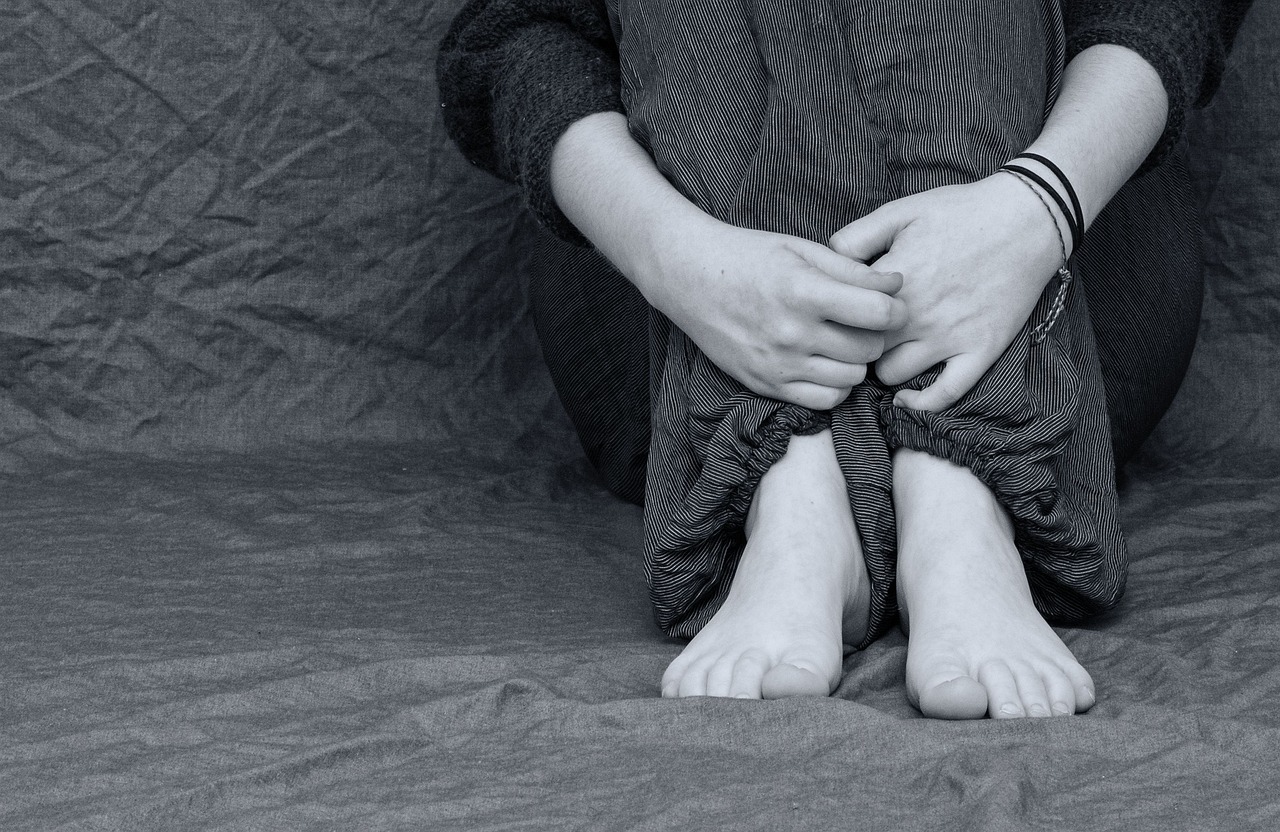When Does Emotional Distress Become Legal Cruelty?

Understanding Emotional Distress
Emotional distress refers to a state of psychological discomfort that can significantly impact an individual's well-being. It encompasses a range of emotions such as anxiety, depression, and fear, often resulting from traumatic experiences or ongoing stressors.
Defining Emotional Distress
Common signs and symptoms
Recognizing emotional distress involves being attentive to various signs and symptoms, including persistent feelings of sadness, hopelessness, and helplessness. Additionally, individuals may experience changes in appetite, sleep disturbances, and difficulty concentrating.
Impact on daily life
The effects of emotional distress extend beyond the internal realm, influencing an individual's ability to function in their daily life. This may manifest as decreased productivity at work or school, strained relationships with family and friends, and a general sense of disengagement from activities once enjoyed.
Emotional Distress vs. Normal Stress
Identifying the difference
Distinguishing between emotional distress and normal stress lies in the intensity and duration of the emotional experience. While stress is often temporary and manageable, emotional distress tends to be more pervasive and disruptive to one's overall well-being.
Examples of emotional distress
Instances of emotional distress can arise from various sources such as prolonged exposure to a hostile work environment, enduring psychological trauma from past events, or coping with the challenges of a toxic relationship.
The Legal Perspective on Cruelty
In the legal context, Legal Cruelty encompasses a broad spectrum of behaviors and actions that inflict emotional harm or psychological suffering upon an individual. This can manifest in various forms, including emotional abuse, manipulation, and coercive control.
What Constitutes Legal Cruelty?
Legal definitions and criteria
Defining legal cruelty involves establishing clear parameters for what constitutes unacceptable behavior. This may include deliberate actions or omissions that result in significant emotional distress, such as consistent belittling, intimidation, or threats aimed at undermining an individual's self-worth and autonomy.
Emotional abuse as a form of domestic violence
Emotional abuse is recognized as a pervasive form of domestic violence that can have severe and lasting effects on the victim's mental well-being. It encompasses behaviors such as gaslighting, isolation, and controlling tactics aimed at instilling fear and dependency.
Laws and Protections Against Legal Cruelty
State laws and variations
Laws pertaining to legal cruelty vary across different jurisdictions, with each state outlining specific provisions to address emotional abuse within intimate relationships. These laws aim to protect individuals from enduring psychological trauma inflicted by their partners or family members.
Protective measures and support systems
In response to the prevalence of legal cruelty cases, protective measures have been implemented to safeguard victims from further harm. This includes the establishment of shelters, hotlines, and counseling services tailored to support individuals experiencing emotional distress within abusive relationships.
By recognizing the gravity of legal cruelty and enacting protective measures, society aims to mitigate the detrimental impact of emotional abuse on individuals' mental health and overall well-being.
When Does Emotional Distress Cross The Line Into Legal Cruelty?
Identifying the Threshold
Recognizing when Emotional Distress crosses the line into Legal Cruelty requires a careful examination of behaviors and their impact on an individual's mental well-being. There are specific examples of actions and patterns that signify a transition from emotional distress to legal cruelty.
Examples of behaviors crossing into legal cruelty
Behaviors that cross the threshold into legal cruelty may include persistent and severe forms of emotional abuse, such as gaslighting, isolation, and coercive control. These actions are aimed at undermining an individual's self-worth, autonomy, and psychological stability. Additionally, threats of harm, whether physical or psychological, can also constitute legal cruelty when used to induce fear and compliance.
The role of intent and pattern in legal considerations is crucial in determining the severity of emotional distress. Intent refers to the deliberate nature of actions aimed at causing harm or suffering, while pattern pertains to the repetitive nature of these behaviors over time. Both factors contribute to establishing a clear distinction between ordinary emotional distress and legally actionable cruelty.
Case Studies and Legal Precedents
Notable cases involving emotional distress escalating into legal cruelty have played a significant role in shaping the understanding and recognition of this issue within the legal system. These cases have set precedents for identifying, addressing, and preventing instances of legal cruelty.
Notable cases and their outcomes
One such case involved a victim who endured prolonged psychological manipulation and control within an intimate relationship. The perpetrator systematically isolated the victim from their support network, instilled fear through threats, and undermined their sense of self-worth. As a result, the court recognized these actions as constituting legal cruelty, leading to protective measures being implemented for the victim's safety.
Another case highlighted coercive control tactics employed in a familial setting where emotional abuse was used to maintain dominance over vulnerable family members. Legal intervention resulted in providing support for the affected individuals while holding the perpetrator accountable for their harmful conduct.
How these cases have shaped the understanding of legal cruelty
These cases have contributed to raising awareness about the detrimental effects of emotional distress evolving into legal cruelty. They have underscored the importance of recognizing subtle yet damaging forms of psychological harm within interpersonal relationships. Furthermore, they have influenced legislative reforms aimed at providing enhanced protection for individuals experiencing emotional abuse that crosses into legally actionable territory.
Recognizing and Responding to Legal Cruelty
As Emotional Abuse escalates into the realm of Legal Cruelty, it becomes imperative to recognize the warning signs and take proactive steps to address the situation effectively.
Signs of Emotional Abuse Turning Into Legal Cruelty
Red flags to watch for
Identifying the transition from emotional abuse to legal cruelty involves being attentive to specific indicators. These may include a persistent pattern of manipulative behavior, intimidation tactics, and coercive control aimed at undermining an individual's autonomy and psychological well-being. Additionally, instances of isolation from support networks, threats of harm, and systematic degradation can signify the escalation of emotional abuse into legally actionable cruelty.
The importance of documenting evidence
In cases where emotional distress crosses into legal cruelty, documenting evidence becomes crucial in substantiating claims and seeking legal recourse. This may involve keeping records of threatening communications, preserving physical evidence of harm or coercion, and maintaining a journal detailing the occurrences of abusive behavior. Documentation serves as a vital tool in validating experiences and building a compelling case for intervention.
Seeking Help and Legal Recourse
Resources for victims
Individuals experiencing legal cruelty are encouraged to seek support from dedicated resources tailored to address their specific needs. This includes access to confidential helplines, counseling services specializing in trauma recovery, and legal advocacy organizations equipped to provide guidance on navigating the complexities of emotional abuse within a legal framework.
Steps to take legal action
Taking proactive steps towards addressing legal cruelty involves seeking assistance from legal professionals with expertise in handling cases related to emotional abuse. This may entail filing for protective orders, initiating civil litigation against perpetrators, or collaborating with law enforcement agencies to ensure safety measures are implemented. Additionally, engaging in therapeutic interventions aimed at healing from the psychological impact of legal cruelty is integral to the recovery process.
Contact your Texas Divorce Attorney
To ensure your rights are correctly represented and protected during Divorce and Suit Affecting Parent-Child Relationship proceedings, it is advisable to contact your divorce attorney promptly.
For more information, please visit https://texasdivorce.esq
Subscribe to get the updates!
Sign up now to receive timely blog updates.
I accept the email subscription terms.

